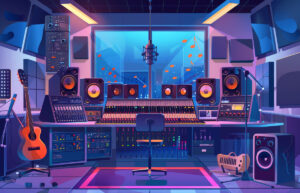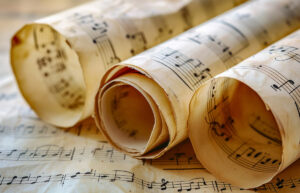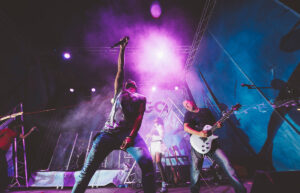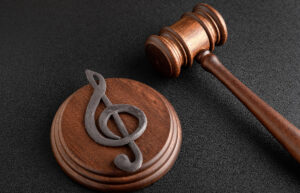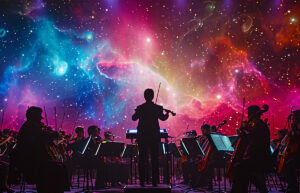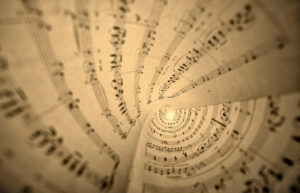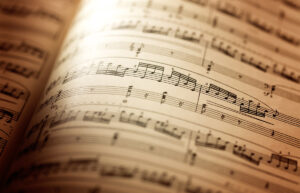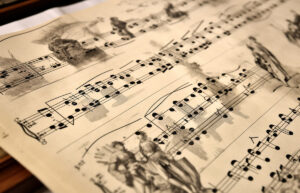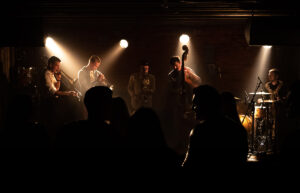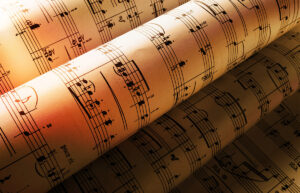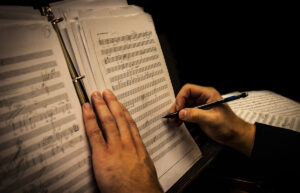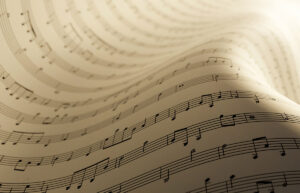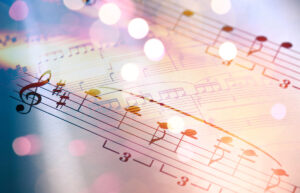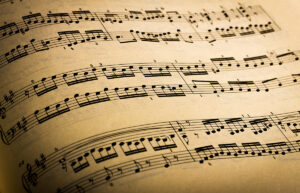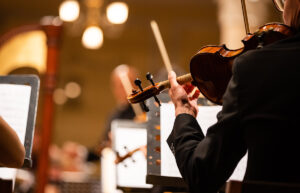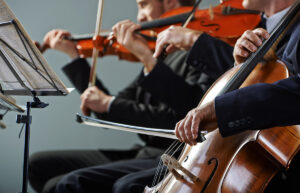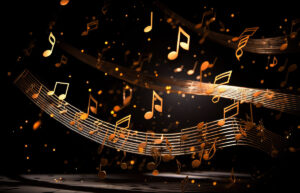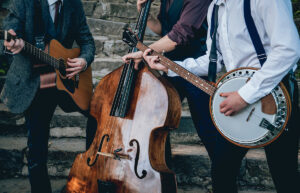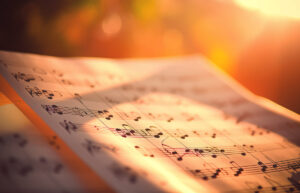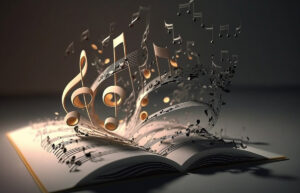The Complete Guide To Ska Music
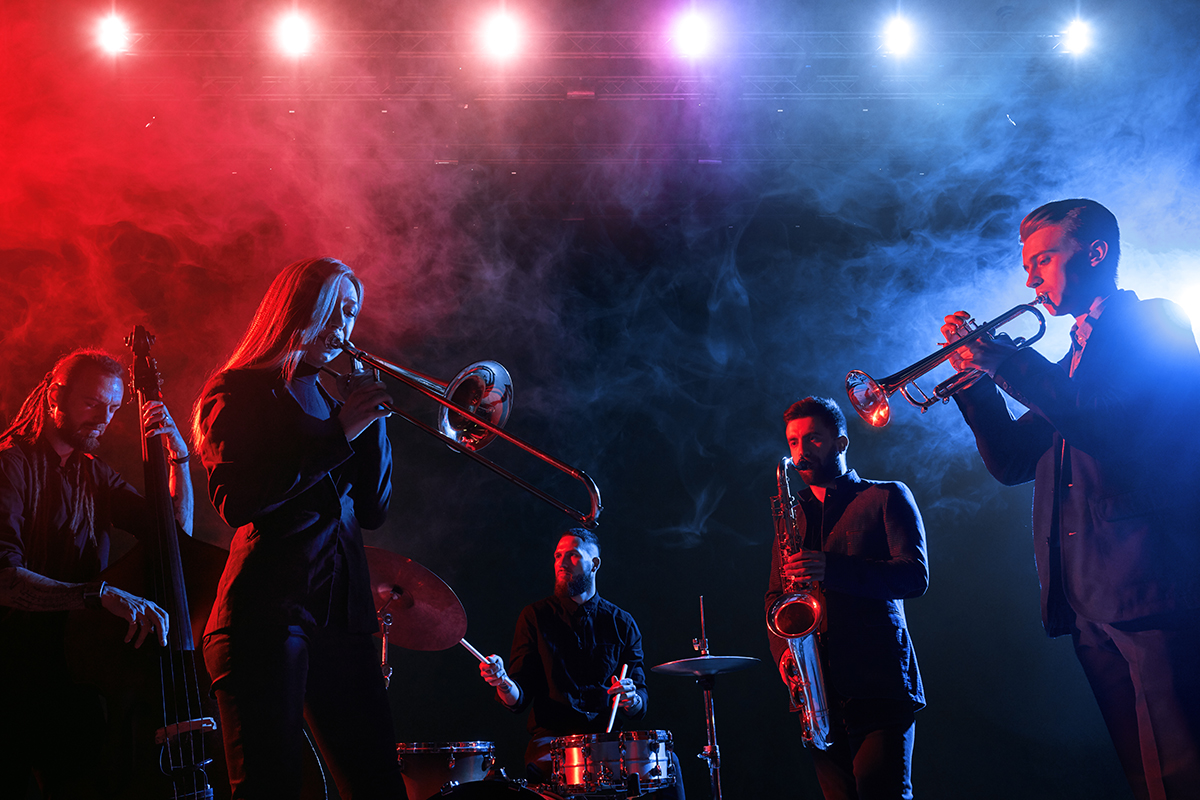
Ska, a genre originating in Jamaica during the late 1950s, is a vibrant musical fusion that has captivated listeners with its distinctive characteristics. Rooted in the rhythmic traditions of Caribbean mento and calypso, ska seamlessly incorporates the swing of American jazz and the soulful tones of rhythm and blues.
Welcome to TheDemoStop, now join the community!
Connect with artists, fans and producers around the world.
What is ska music?
Ska music is a sonic kaleidoscope combining American jazz and the rhythmic heartbeat of the Caribbean. Imagine a joyful combination of mento and calypso, accompanied by a canvas covered in contagious, unconventional guitar strokes. Ska music propels you into a joyful rhythm that influences punk’s rebellious spirit and shaped reggae. Ska music is more than music. It’s a dynamic, irresistible force and an aural journey in which each note asks you to join the dance of the unconstrained genre.
Origin of ska music
Ska music can be traced to Jamaica in the late 1950s. It emerged as a distinctive genre, blending influences from Caribbean mento and calypso with the sounds of American jazz and rhythms and blues. Early ska was defined by an upbeat and lively tempo, characterized by equally offbeat guitar accents. This genre played a crucial role in evolving Jamaica’s music scene, serving as a precursor to reggae. The fusion of cultural elements and musical styles in Jamaica during this time laid the foundation for the infectious and influential sounds of ska.
Jamaican music influences
Ska music is deeply rooted in Jamaican musical traditions, incorporating rhythmic elements from mento and calypso, Afro-Caribbean drumming, and the call-and-response vocal style. American jazz and rhythm and blues influence the genre, notably in ska’s prominent horns and brass sections. This fusion creates the lively and distinctive sound that defines ska.
Jazz and R&B influence
Ska music bears the imprint of American jazz and rhythm and blues, seamlessly intertwining these influences into its rhythmic fabric. The lively horns and brass sections that define ska can be traced to the exuberance and arrangements in jazz and R&B. This fusion adds a dynamic layer to ska’s sound, showcasing how the genre absorbed and reinterpreted elements from across the musical spectrum, creating a distinctive and infectious musical style.
Birth of ska music in the 1950s
In the late 1950s, against the backdrop of Jamaica’s vibrant musical scene, ska music emerged as a dynamic fusion. Influenced by the rhythmic traditions of Caribbean mento and calypso, ska incorporated the upbeat energy of American jazz and the soulful tones of rhythm and blues. This cultural amalgamation gave birth to a genre characterized by its brisk tempo, distinctive offbeat guitar rhythms, and a sound that marked a significant evolution in Jamaican music. Ska’s inception set the stage for a musical journey that would influence not only reggae but also leave an indelible mark on global music landscapes.
Evolution of ska music
Ska music evolved from Jamaican roots in the 1950s, gradually giving rise to reggae. Over time, ska’s upbeat tempo and offbeat guitar rhythms influenced diverse genres, including punk and ska punk, cementing its enduring impact on the global music scene.
First-wave ska
First-wave ska, originating in 1960s Jamaica, blended Caribbean mento, calypso, and American jazz, creating an infectious sound marked by horns and offbeat guitar. Pioneered by artists like The Skatalites, it set the stage for reggae and left a lasting global impact.
Second wave in the UK
The second wave of ska, often associated with the 2-Tone movement in the UK during the late 1970s and early 1980s, revived the genre. Bands like The Specials, Madness, and The Selecter infused ska with punk and new wave influences, creating a socially conscious and danceable sound. The 2 Tone era not only revitalized ska but also emphasized racial unity through its diverse lineup of musicians and fans.
Third-wave ska
The third wave of ska, spanning the late 20th century and into the 21st, witnessed ska’s transatlantic journey with a resurgence of popularity. Bands like Reel Big Fish, Less Than Jake and Mighty Mighty Bosstones infused ska with punk, rock, and other eclectic elements, creating a diverse and high-energy sound. This wave expanded ska’s reach globally, especially in the United States, and demonstrated the genre’s ability to evolve while retaining its infectious and danceable core.
Characteristics of ska music
Upbeat tempo
Ska music is known for its lively and brisk tempo, often characterized by a quick-paced rhythm that encourages movement and dance. The tempo sets a vibrant and energetic one, creating an engaging atmosphere for both listeners and dancers alike.
Use of brass instruments
Brass instruments play a significant role in ska music, with the inclusion of horns, trumpets, trombones, and saxophones. These instruments contribute to the genre’s signature sound, adding a dynamic and bright quality to the music. The brass sections in ska are often vibrant and melodically rich, enhancing the overall rhythm and texture.
Offbeat rhythm
One of the defining features of ska is its distinctive offbeat guitar or piano accents. This syncopated rhythm emphasized the “upstroke” or offbeat notes, creating a bouncing and infectious groove. It’s this offbeat pattern that gives ska its characteristic bounce and distinguishes it from other musical styles.
Influences from Jamaican music
Ska’s roots are deeply intertwined with Jamaican musical traditions. Elements from Caribbean music styles such as mento, calypso, and early reggae are foundational to ska. The fusion of these influences forms the backbone of ska, contributing to its upbeat, rhythmic complexity, and distinctive sound.
Welcome to TheDemoStop, now join the community!
Connect with artists, fans and producers around the world.
Ska subgenres
2 Tone
Originating in the late 1970s in the UK, the 2 Tone movement was a fusion of ska with punk and new wave music. Bands like The Specials, Madness, and The Selecter were prominent in this subgenre. Known for its socially conscious lyrics addressing issues such as racism and political unrest, 2 Tone ska often featured a mix of upbeat rhythms, horns, and danceable melodies. It emphasized racial unity both in its music and by featuring racially diverse lineups.
Ska jazz
Ska jazz blends elements of ska with the improvisational nature of jazz music. This subgenre infuses traditional ska rhythms with jazz-influenced melodies, harmonies, and improvisation, often incorporating brass sections and complex instrumental arrangements. It maintains the energetic ska tempo while exploring the harmonic depth and improvisational spirit characteristic of jazz music.
Ska pop
Ska pop is a catchy and accessible form of ska that incorporates pop music sensibilities. It often features infectious melodies, catchy hooks, and a more polished sound compared with conventional ska. Ska pop trends to emphasize the melodic aspects of the genre while retaining ska’s upbeat tempo and occasional use of horns or offbeat rhythms.
Ska punk
Ska punk combines the energy and aggression of punk rock with ska’s upbeat tempo and rhythms. Bands in this subgenre, such as Operation Ivy and Rancid, blend punk’s rawness with ska’s offbeat guitar patterns and horns, creating a high-energy and rebellious sound. Ska punk typically features fast tempos, distorted guitars, and driving rhythms.
Ska-core
Ska-core is a fusion of ska with hardcore punk. This subgenre often incorporates the fast-paced aggression of hardcore punk with the upbeat ska rhythms and horn sections. Ska-core bands, like The Mighty Mighty Bosstones, blend the raw intensity of punk with the danceable and lively elements of ska, creating a frenetic and powerful sound.
Spouge
Originating in Barbados, Spouge is a unique blend of ska, calypso, and R&B. It features a distinct rhythm known as “spouge beat” characterized by its syncopated pattern. Spouge music often incorporates elements of social commentary and danceable rhythms, creating a vibrant and distinct musical style.
Christian Ska
This subgenre combines ska music with Christian-themed lyrics and messages. Bands within this genre infuse ska’s musical elements with lyrics that reflect Christian faith, often expressing positive and uplifting messages. Christian ska bands like The Insyderz and Five Iron Frenzy incorporate ska’s upbeat rhythms with spiritually inspired themes.
Instruments used in ska
Guitar
In ska music, the guitar typically plays a pivotal role, often employing a clean and melodic style. Guitarists in ska emphasize offbeat chords or upstrokes, contributing the genre’s characteristic syncopated rhythm. The guitar’s rhythmic patterns are fundamental to ska’s infectious and danceable groove.
Bass guitar
The bass guitar in ska provides the foundation for the music, holding down the rhythm alongside the drums. The bass lines in ska are usually bouncy and syncopated, complementing the offbeat guitar rhythms and adding depth to the overall sound.
Brass instruments
Horns and brass sections, including trumpets, trombones, and saxophones, are essential components of ska music. They often provide melodic accents, harmonies, and vibrant solos, contributing to the genre’s lively and distinctive sound. Brass instruments add a rich and dynamic layer to ska’s arrangements, enhancing its energetic and upbeat quality.
Piano
While not as prominent as other instruments in ska, the piano plays a significant role, especially in ska jazz subgenres. In some ska compositions, the piano contributes to the rhythmic framework, adds melodic layers, or provides harmonic support. It helps to reinforce the lively and vibrant nature of ska music.
Drums
Drums are a cornerstone of ska’s rhythmic structure. Ska drumming emphasizes a steady and driving beat, often featuring a prominent snare drum on the offbeat. The drummer plays a crucial role in creating ska’s infectious groove by maintaining a consistent tempo and emphasizing the syncopated rhythm that defines the genre.
Welcome to TheDemoStop, now join the community!
Connect with artists, fans and producers around the world.
Famous ska musicians and bands
The Skatellites
Formed in the early 1960s in Jamaica, The Skatellites are considered pioneers of ska music. Composed of highly skilled musicians, including Tommy McCook, don Drummond, and Jackie Mittoo, the band created instrumental ska classics. Their distinctive sound, marked by lively horns and infectious rhythms, laid the foundation for the genre’s development.
Bob Marley and The Wailers
Primarily known for their immense impact on reggae music, Bob Marley and The Wailers initially flirted with ska during the 1960s. Before achieving global recognition with reggae. The band produced ska tracks like “Simmer Down” that reflected the youthful energy and social commentary present in ska music of that era.
Madness
Emerging during the late 1970s in the UK, Madness was a prominent band in the 2 Tone ska revival. Their blend of ska with pop sensibilities and witty lyrics earned them widespread success. Hits like “One Step Beyond” and “Our House” showcased their infectious ska-pop sound, contributing to their lasting impact on British music.
The Specials
A key figure in the 2 Tone movement, The Specials combined ska with punk and new wave influences. Their socially conscious lyrics, energetic performances, and songs like “Ghost Town” and “A Message to You, Rudy” addressed societal issues, making them a symbol of the era’s cultural and political climate.
No Doubt
Hailing from California, No Doubt emerged in the !990s, infusing ska with alternative rock and pop elements. Fronted by Gwen Stefani, their vibrant blend of ska and rock produced hits like “Just a Girl” and “Spiderwebs,” contributing to their mainstream success and introducing ska to a wider audience.
Ska music top examples
“Mirror in the Bathroom” by The Beat
The Beat’s “Mirror in the Bathroom” from their 1980s album “I Just Can’t Stop It” showcases the band’s distinctive blend of ska, punk, and new wave. With its pulsating bassline, rhythmic guitar, and energetic brass section, the song captures the essence of the band’s catchy and danceable ska-infused sound
“One Step Beyond” by Madness
Released in 1979, “One Step Beyond” is Madness’s energetic and iconic ska anthem. Its infectious rhythm, coupled with the memorable spoken introduction (“Hey, you! Don’t watch that, Watch this!”), propelled it to become one of the band’s most recognized and enduring songs. Its upbeat tempo and catchy brass section encapsulate the vibrant spirit of ska music during the 2 Tone era.
“Rudie Can’t Fail” by The Clash
Featured on The Clash’s seminal album “London Calling” (1979), “Rudie Can’t Fail” infuses ska with the band’s punk and rock influences. The song’s fusion of ska rhythms, energetic guitar riffs, and catchy hooks reflects The Clash’s experimentation with various musical styles while paying homage to ska’s infectious groove.
“Rock Fort Rock” by The Skatellites
“Rock Fort Rock” is a defining instrumental ska track by The Skatellites from the 1960s. It showcases ska’s lively brass and infectious rhythm, representing the genre’s vibrant essence and The Skatellites’ influential role in ska’s development.
“Party at Ground Zero” by Fishbone
Fishbone’s “Party at Ground Zero,” released in 1985 on their debut album, “Fishbone,” exemplifies ska’s fusion with punk, rock, and funk. The song’s lively tempo, dynamic horn arrangements, and spirited vocals encapsulate the band’s eclectic and high-energy approach to ska music, making it a standout track in their repertoire.
Conclusion
What is ska music? Ska music is a lively genre that originated in Jamaica during the late 1950s and is characterized by its brisk tempo, offbeat guitar rhythms, and prominent use of brass instruments. It combines Caribbean influences such as mento and calypso with elements of American jazz and rhythm and blues.
Origins of ska music: The late 1950s saw the emergence of ska music in Jamaica, which combined American jazz and rhythm and blues with Caribbean mento and calypso components.
Evolution of ska music: Ska changed progressively as follows:
- First wave ska: Originated in 1960s Jamaica, blending Caribbean sounds with American jazz.
- Second wave ska: Late 1970s UK revival (2 Tone) mixed ska with punk, addressing social issues.
- Third wave ska: Late twentieth century global resurgence, blending ska with various genres, gaining popularity worldwide.
Characteristics of ska music: Ska music is characterized by its lively and quick tempo, highlighted by offbeat guitar or piano rhythms, often accentuating the upbeat. The genre prominently features brass instruments like trumpets and trombones, adding a vibrant and melodic layer to the sound. Its roots stem from blending Caribbean musical styles such as mento and calypso with the rhythmic influences of American jazz and rhythm and blues.
Ska subgenres: Ska subgenres include 2 Tone, ska jazz, ska punk, ska-core, spouge, ska pop, and Christian ska, each blending ska with diverse musical elements and themes.
Instruments used in ska music: Instruments used in ska music include guitar, bass guitar, brass instruments (like trumpets, trombones), piano, and drums, contributing to its lively and distinctive sound.
Famous ska musicians and bands: The following ska artists have amassed quite a following:
- Skatellites
- Bob Marley and The Wailers
- Madness
- The Specials
- No doubt
Famous ska music songs: The following ska songs are famous:
- Mirror in the Bathroom
- One Step Beyond
- Rudie Can’t Fall
- Rock Fort Rock
- Party at Ground Zero
FAQs
What defines ska music?
Ska music is defined by its brisk tempo, distinctive offbeat guitar or piano rhythms, prominent use of brass instruments, and its fusion of Caribbean influences with American jazz and rhythm and blues.
Why is it called ska music?
The origin of the term “ska” is uncertain, but it’s believed to derive from a rhythmic sound closely associated with the genre, possibly from the guitar’s upbeat or the sound of a rimshot on the drums.
When did ska music originate?
Ska music originated in the late 1950s in Jamaica, blending Caribbean mento and calypso with American jazz and rhythm and values influence.
What are some examples of ska music?
Some examples of ska music include “One Step Beyond” by Madness, “Ghost Town” by The Specials, “Mirror in the Bathroom” by The English Beat, and “54-46 That’s My Number” by Toots and the Maytals.
What are the three waves of ska?
The three waves of ska include the original Jamaican scene in the 1960s (first wave), the UK revival in the late 1970s (second wave), and the global resurgence from the late 20th century onwards (third wave).
Is ska still popular today?
Ska continues to have a dedicated fanbase and influence in various music genres, but its mainstream popularity has fluctuated over time.
Who made ska famous?
The Skatalites, Prince Buster, and various Jamaican artists in the late 1950s and early 1960s played a significant role in popularizing ska music.
What instruments are used in ska?
In ska music, typical instruments include guitar, bass guitar, brass instruments (such as trumpets, trombones, and saxophones), piano, and drums.


